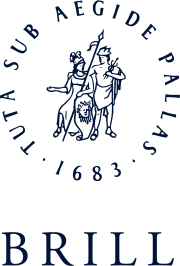
Clarivate Analytics is a leading player in the STM publishing industry, providing truthful insights into the world of academic publishing. On the 29th of June, 2020, Clarivate Analytics released its Journal Citation Reports (JCR), an important document that is published annually on the Web of Science. The JCR document is important for the global academic community as it provides an insight into high-quality academic journals of the international community.
All academic journals are ranked on the basis of several indicators, visualizations, and data. The report is a quantitative estimate of the impact created by academic journals in their field of study. The report specifically scrutinizes the quality of research published in prestigious journals and how they were promoted to the international community of researchers.
To compile this report, Clarivate Analytics team made use of the 2019 data presented in the Web of Science Core Collection, which is a flagship brand of the company and a global citation database that is publisher-neutral. Clarivate Analytics invited a global team of experts to curate the structured data presented in the 2019 Web of Science Core Collection.
To accurately evaluate the impact factor of academic journals, the team of experts carefully evaluated the content presented in the selected collection of books, conference proceedings, and journals. This report is used to estimate the true worth of a journal in the academic community, which consists of researchers, editors, publishers, investors, and librarians. Their main goal is to promote high-impact journals to a diverse set of audiences.
Although vast data of metrics is available in the JCR report, the most widely used metric is the “ Web of Science journal impact factor” in academic publishing. So, what really are the key highlights of the JCR report published in 2020? Let us first explore the selection criteria for the inclusion of journals. In the 2020 JCR report, the experts have added 351 new journals to the inclusion list.
Out of them, 178 journals are completely “Open Access” in nature. Given that most researchers have flocked to the OA model of publishing, JCR report included 1600 OA journals in 2020. Nevertheless, JCR report has compiled the impact-factor of 12,000 journals from 236 research fields of hard sciences and social sciences. These journals were selected from 83 countries spread across five continents of the earth.
The JCR report of 2020 has evaluated the open access publishing model through new descriptive data. This implies that the report includes data on the access model used for reading articles of each journal. Thus, the JCR report of 2020 provides transparent, publisher-neutral information to the community of researchers on whether they can access “free-to-read” articles in a journal.
Moreover, the report also provides information on whether the articles can be re-used through Creative Commons Licenses, which are usually issued through “gold open access model”. Finally, the report presents the overall citations and the volume of content presented by each journal.
One of the key highlights of the JCR report is the fact that it includes 7487 hybrid journals in its 2020 edition. Moreover, these hybrid journals are innovatively classified in order to enable readers to quickly identify the following features of these journals: 1) The number of papers published through the conventional subscription model, and 2) the number of papers published through the Creative Common Licenses, which establishes the “gold open access model.”
Now that we know the classification criteria of each type of journal, let’s explore the objectives behind the journal selection process. In the JCR report of 2020, Clarivate Analytics has excluded 33 journals that did not conform to the standards of academic integrity. Thus, the JCR report of 2020 has excluded 0.27% of the listed journals.
These journals have exhibited anomalous behavior in terms of citation. There have been strong evidences to prove that the journals had many cases of self-citation and stacked citation. These situations do not conform with the disciplinary norms put forth by the JCR review committee of experts.
Another important disciplinary action exercised by the JCR review committee is as follows: An “Editorial Expression of Concern” was issued to as many as 15 academic journals, which contained one or more published articles with an unusually high number of journal citations. These citations were disproportionately associated with JIF. The editorial board of Clarivate Analytics will scrutinize low-quality content of this type to prevent any distortions of the Journal Impact Factor.
Keith Collier is a senior vice president of products at the Science Group of Clarivate Analytics. In a press release of the 2020 JCR report, Keith Collier issued the following statement: Web of Science Citation Reports has been providing unbiased data on journal citations for the past 40 years, so the academic community has been following this report consistently for these many years.
It gives a glimpse of the world’s leading journals in the field of hard sciences and social sciences. The research community includes all academic editors, librarians, researchers, publishers, and institutions. They can carefully evaluate the selected journals to make informed decisions about their publications. The report helps them understand citation trends of academic journals.
In the year 2020, Clarivate Analytics made concerted efforts to accelerate the pace of innovation in academia. They have updated the parameters of self-citation and added a new paradigm of descriptive data, which will provide the research community with a better insight on the evolving models of academic publishing.
In the 2020 JCR report, a wide number of indicators are used for evaluating each journal’s profile. The most noteworthy among them is the “Web of Science Impact Factor.” It indicates the average frequency of citation received by a journal in a particular year.
Moreover, the report also presents “Immediacy Index,” which indicates the frequency of citing an average article from a journal in the same year of publication. After classifying the journals according to their category, the journal impact factor indicates the rank of the journal. This metric is expressed in terms of percentile.
![]()









